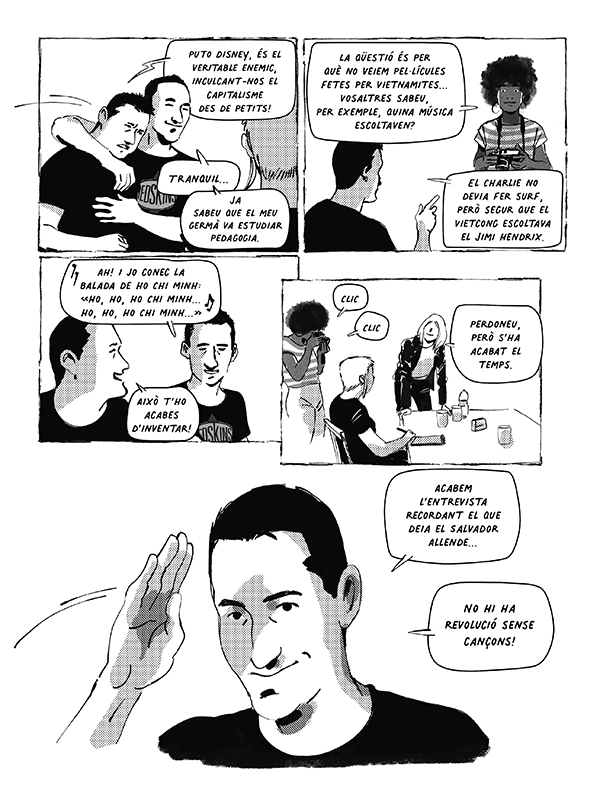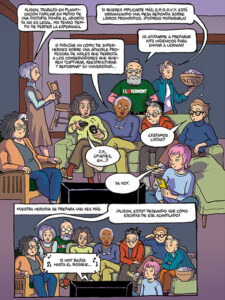Fermín Muguruza, Harkaitz Cano, Isa Campo and Susanna Martín (Illustrator) · Reservoir Books · 2022
Ainhoa It is the second part of that Black is black with which Fermín Muguruza He made us travel a good part of the revolutionary movements that were cooked in the world in the sixties, from the United States to Algeria. In this second volume —Easier to follow despite continuing references—We travel with the daughter of the first, Ainhoa, A Cuban who learns Basque thanks to two visitors from the island who claim to speak Dutch but are actually Joseba Sarrionindía and Iñaki Picabea, two Etarras who escaped from the Martutene prison in 1985 hidden inside baffles. los corts, Muguruza's first band, They had played there a month before the escape and composed the mythical “Sarri, Sarri ”Following this news with which the comic starts. In Ainhoa Women become the protagonists and the heteronormative is diluted, But we continue touring the revolutions, now of the eighties, that exploded in Lebanon, Kabul, Türkiye or Kurdistan, With his women's guerrillas. And we discover in passing the counterrevolutionary mechanisms used to turn them off, as the use of heroin as a method of financing and destruction of young rebels. And here the history of the 150 kilos of cocaine seized by the Civil Guard that disappeared "mysteriously" in 1990, To which the Negu Gorriak group dedicated the song "Ustelkeria" ("Rot") and for which he received a demand from Lieutenant Colonel of the body of the time, Enrique Rodríguez Galindo. Black is black It is one encyclopedia of the world revolutions of the last century, scholarly, But danceable. S.M.
















